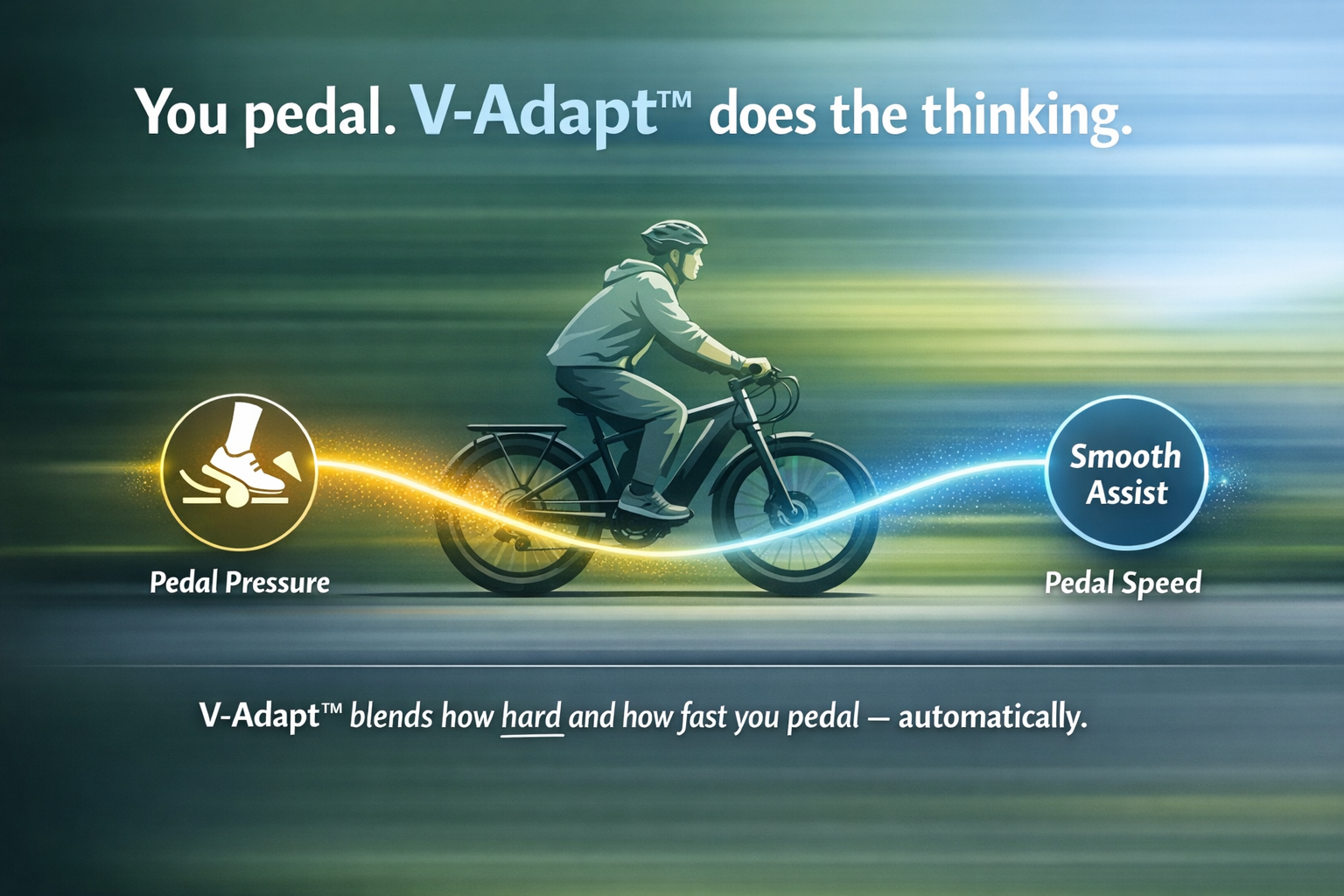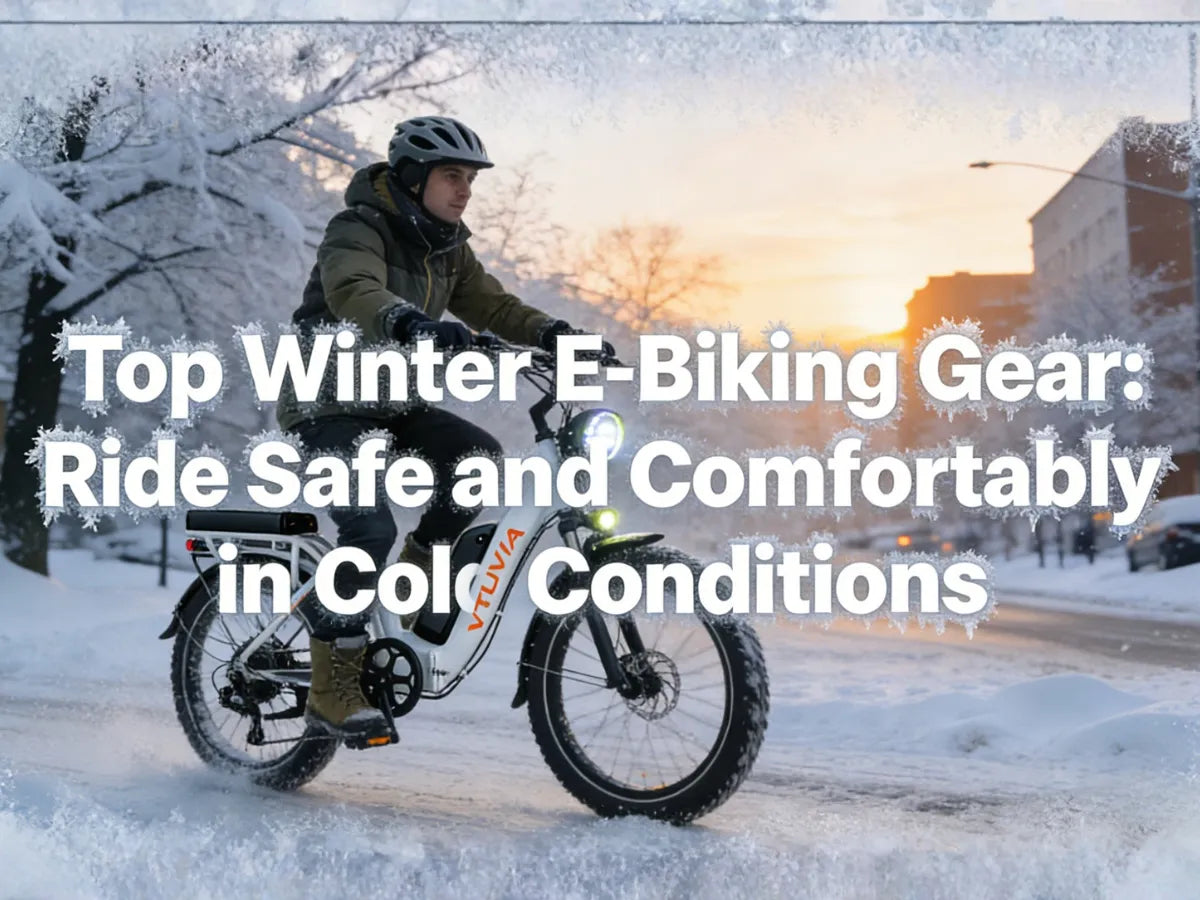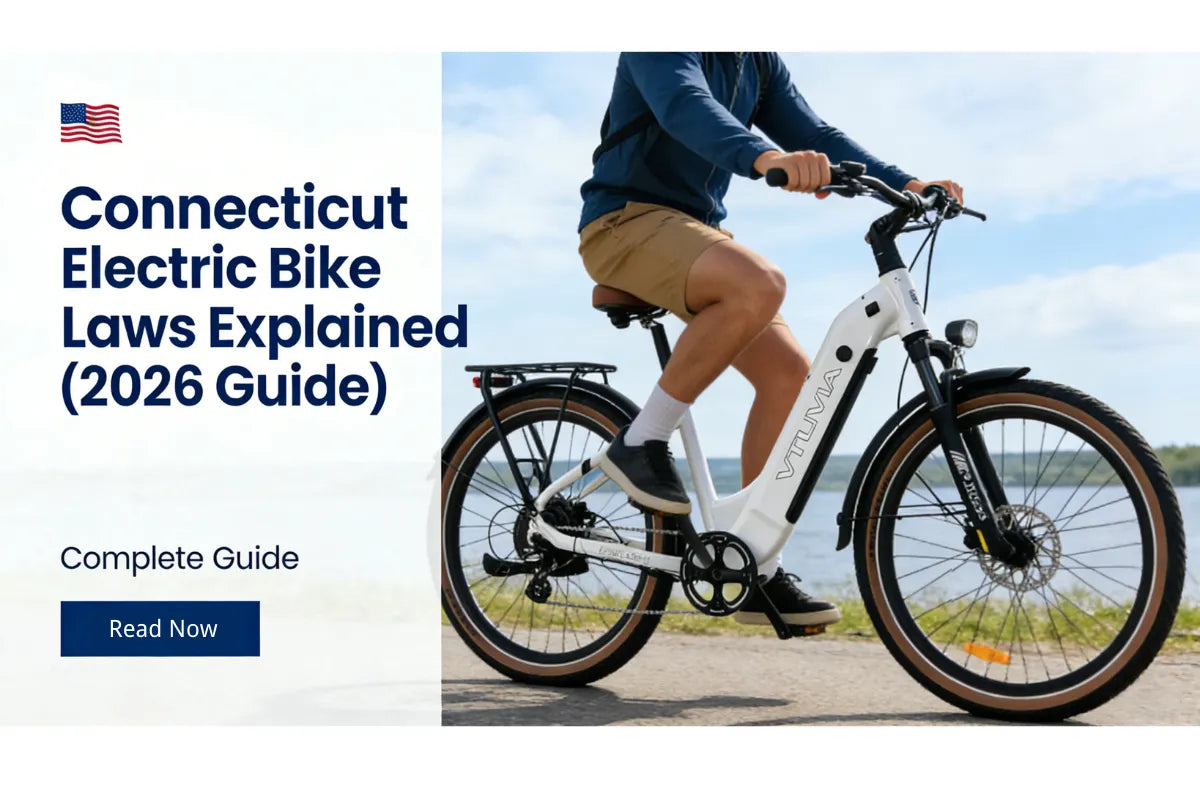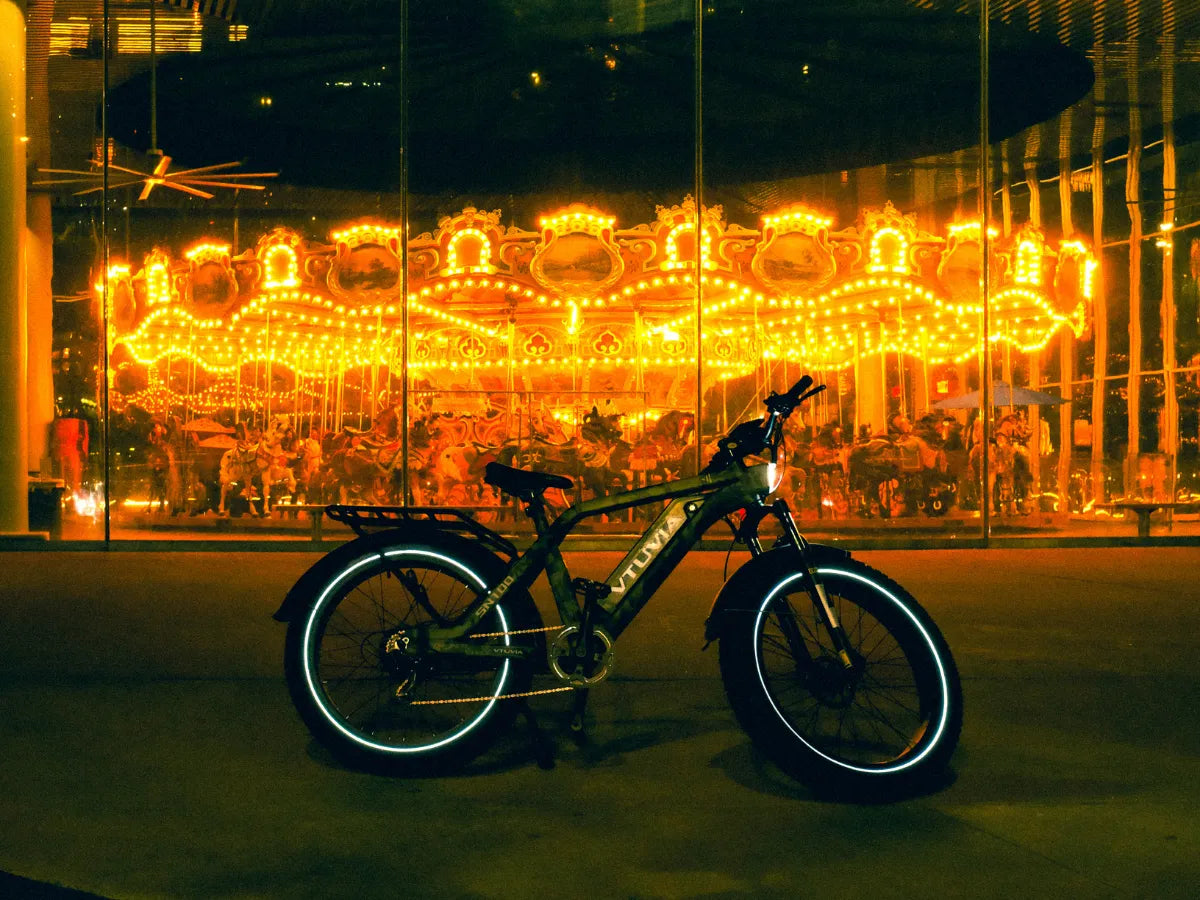Here are three important tips:
- Speed
- Braking
- Rules Of The Road

Unlike standard bicycles, ebikes have the capabilities to reach high speeds with the help of a motor. While it’s still a good idea to stay within local regulations, it might be best to take it slower than usual for a safer ride in the snow. There’s no need to go the speed limit if the roads are wet or icy. Start your ride without the use of pedal assist to get used to riding in the snow, then as you become more comfortable, slowly increase to a manageable riding speed.
As mentioned above, electric bikes can go fast. With that said, they’re also heavier than standard bikes since they come equipped with rear hub motors and other electrical components. Heavier means you’ll need a longer braking distance and if you do happen to ride at higher speeds that are still within moderation, you may need stronger braking power to slow or stop . Wet brakes also take longer to stop because there is less friction from the wet wheel rim. Make sure there’s plenty of room between you and other vehicles and watch your speed. Keep your hand on the brake lever and squeeze lightly to maintain a safe speed so you can brake in time. And if you happen to commute or ride in a high-traffic area, keep an eye out for paint on the road. It can become slick when road conditions are wet.
In any season, or at any time of the day, the rules of the road don’t change. That means its important to always wear a helmet, and ride with the flow of traffic and stay within the bike lane.
Keeping your bike at peak performance and understanding how freezing temperatures can have an effect on your ebike and your ride will enable you to ride with confidence and joy. And now that you're ready, let it snow! Let it snow! Let it snow!





Share:
Reasons For Why Choose VTUVIA Electric Bikes
VTUVIA SX20 Review: Unleash Your Inner Antelope With The Folding E-Bike That Does It All